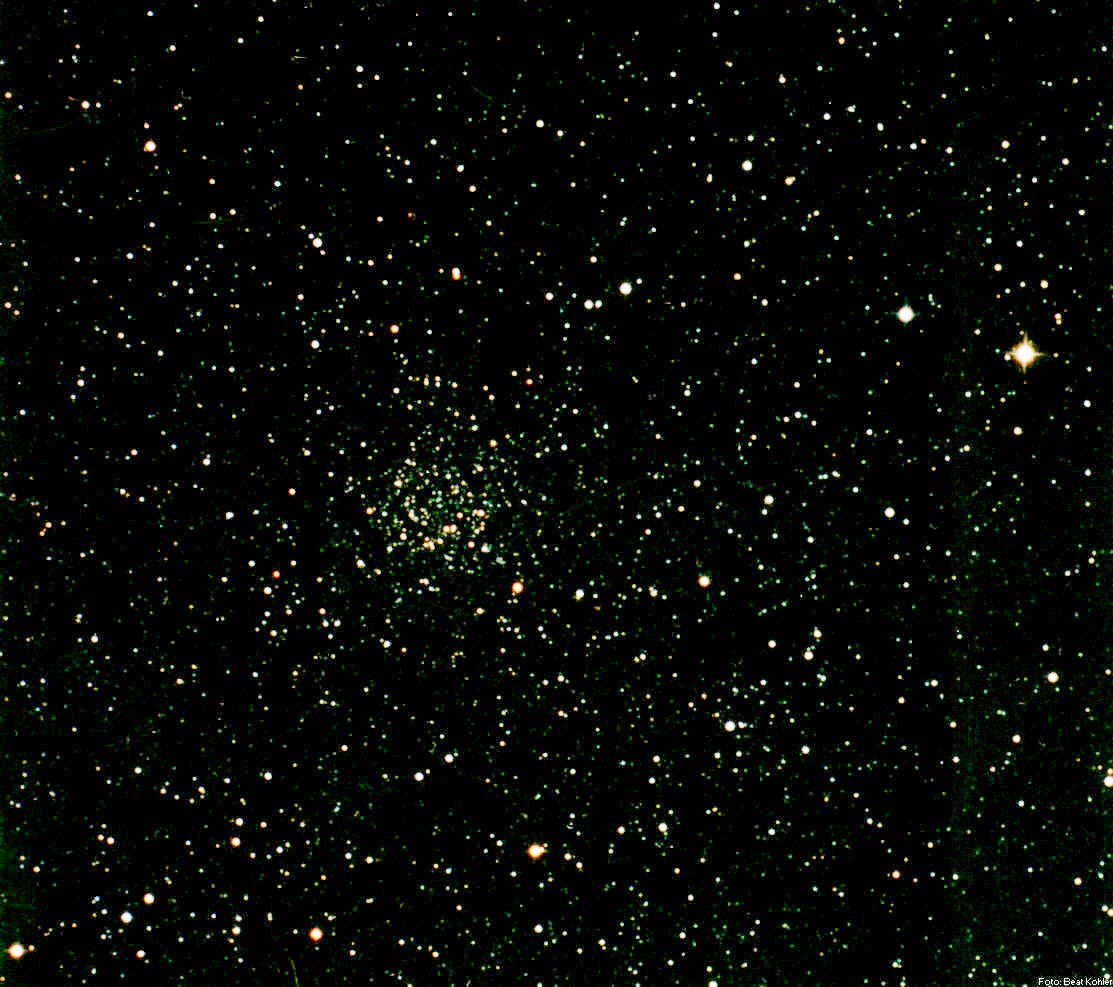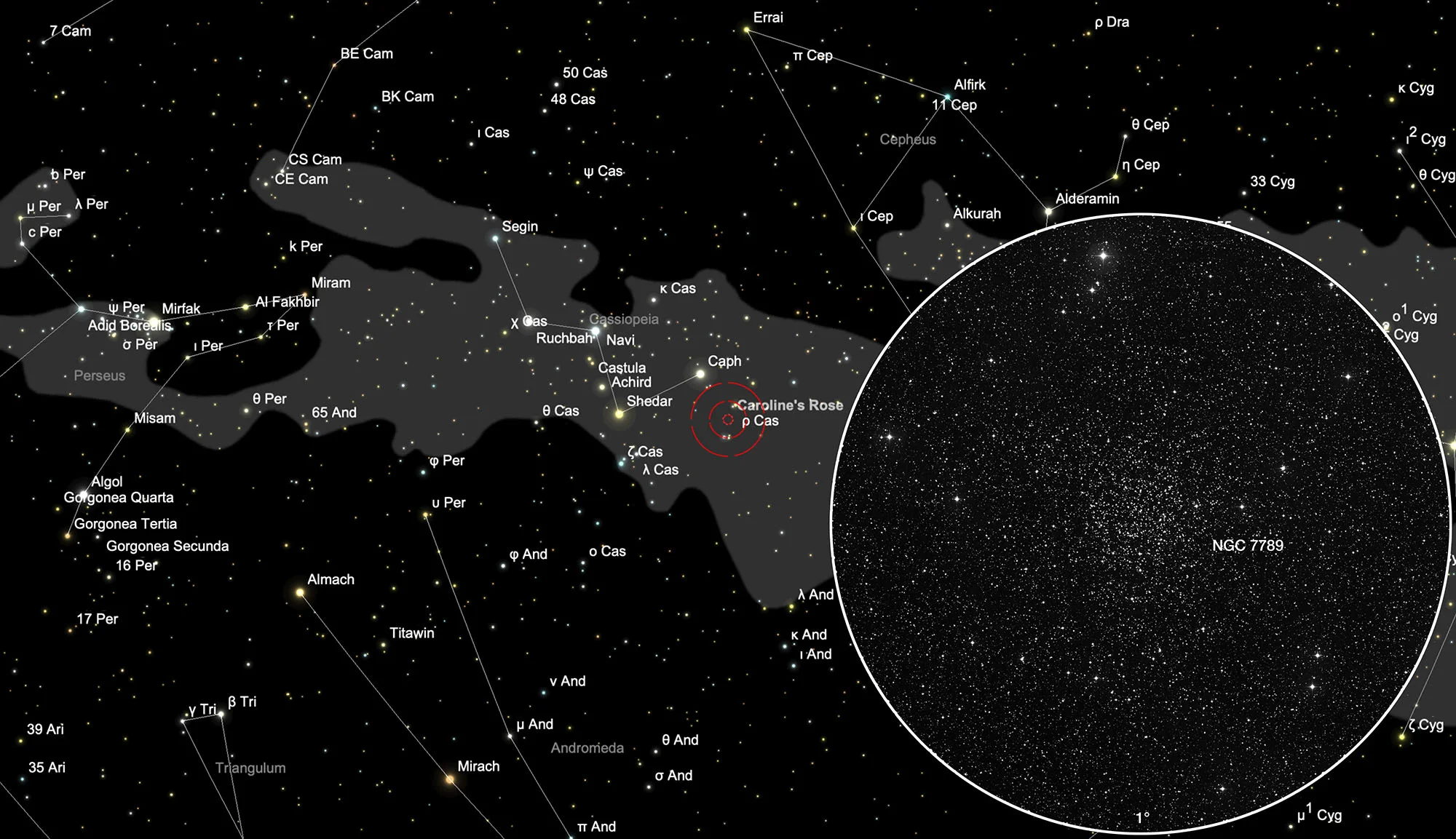Carolines Rose, Herschels Spiral Cluster (NGC 7789)

History
NGC 7789, «Caroline's Rose» or «Herschel's Spiral Cluster», is an unusually rich open star cluster. It was discovered on 1 November 1783 by William Herschel's sister Caroline. William Herschel entered the star cluster in his catalog on 18 October 1786 as VI 30 (VI = very crowded and rich star clusters). He noted: «A beautiful cluster of very compressed stars. Very rich. C. H. discovered it 1783.» [464]
Physical Properties
The entire group of stars covers an area of about half a degree and stands out sharply from the surrounding area. The approximately 1000 stars that may belong to the star cluster vary in brightness from 11 to 18 magnitudes. The distance is about 6000 to 6200 light-years, giving this cluster a true diameter of 50 light-years. All the stars together are about 3000 times brighter than the Sun.
NGC 7789 has been classified by some astronomers as a star cluster that is an intermediate between an open galactic star cluster and a less concentrated globular star cluster. A study by A. Sandage and EM Burbidge (1958) showed that it is indeed a Galactic-type cluster - but a rather unusual one: the stars are well advanced in their evolution, suggesting that the cluster is very old, older than any other well-known open star cluster. The brightest stars are orange giants of the type K4 III with an absolute magnitude of -2.3 mag. The majority of the other bright stars are giants and subgiants. All stars brighter than +2 mag appear to have evolved out of the main sequence of the H-R diagram. The calculated age of the cluster is about 1.5 billion years - older than most other galactic star clusters but not as old as the globular star clusters. [4]
| Designation | NGC 7789 |
| Type | OCL (II2r) |
| Right Ascension (J2000.0) | 23h 57m 28.6s |
| Declination (J2000.0) | +56° 42' 52" |
| Diameter | 25 arcmin |
| Visual magnitude | 6.7 mag |
| Metric Distance | 2.337 kpc |
| Dreyer Description | Cl, vL, vRi, vmC, st 11…18 |
| Identification, Remarks | WH VI 30; h 2284; GC 5031; OCL 269 |
How to find Herschel's Spiral Cluster?
The open star cluster is easy to spot; it lies to the right of the «W» in the constellation Cassiopeia, exactly between the two stars σ and ρ Cassiopeiae, which are clearly visible to the naked eye. On 23 September it is in opposition to the Sun and crosses the meridian at local midnight. The best observation time is May to February.
